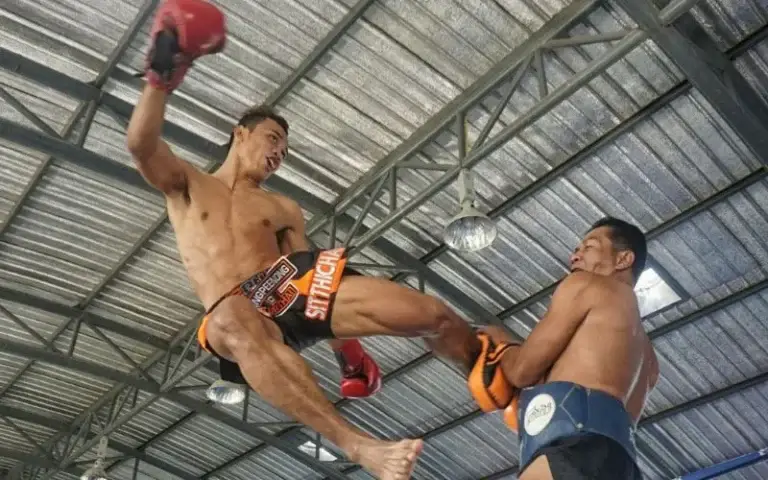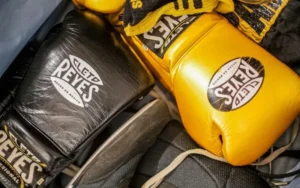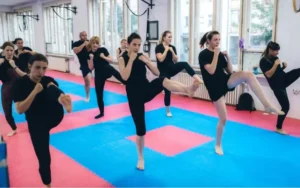Southeast Asian martial arts consist of a wide range of efficient unarmed and weapons techniques which largely remain under the radar outside their native regions. Beyond the globally recognized Muay Thai and Lethwei, several unique systems offer deep cultural insights and effective combat techniques.
In honor of Asian Heritage Month and Asian cultures, here are five martial arts originating from Southeast Asia that showcase the diversity and depth of Southeast Asian fighting traditions.
5 Southeast Asian Martial Arts: Featuring The Least Known
In honor of Asian Heritage Month, we celebrate the rich legacy of martial arts from Southeast Asia, where ancient traditions blend with the vibrant cultures of today. These arts, forged in the fires of history and passed down through generations, are techniques and reflections of deep cultural identity, resilience, and innovation. From the fluid strikes of Yaw-Yan to the powerful animal-inspired movements of Bokator, these martial disciplines embody the spirit and diversity of Southeast Asia. By recognizing these lesser-known arts, we honor the strength, wisdom, and creativity that these Asian martial arts bring to the world.
1. Yaw-Yan (Philippines)
Yaw-Yan, short for Sayaw ng Kamatayan or “Dance of Death,” is a modern Filipino martial art developed in the 1970s by Napoleon Fernandez. While it shares visual similarities with Muay Thai, Yaw-Yan is uniquely Filipino, emphasizing powerful hip-torqued kicks, spinning strikes, and low-line attacks. It blends elements of traditional Filipino fighting techniques such as Eskrima and Panantukan with Western boxing and kickboxing. Known for its fluid yet brutal execution, Yaw-Yan is designed for real-world combat, favoring decisive, aggressive action over stylistic flair. Its rise was fueled by the Filipino full-contact fighting scene, making it one of the most formidable Southeast Asian martial arts to emerge in the modern era.
2. Bokator (Cambodia)
Bokator, one of the oldest martial arts in the world, traces its origins back to the 1st century AD. The name “Bokator” translates to “lion’s pound,” inspired by a legend where a warrior defeated a lion with a single knee strike. This martial art, a relic of historical Cambodian culture, encompasses over 10,000 techniques, including striking, grappling, and weaponry, often mimicking animal movements like the lion, snake, and monkey. Practitioners wear traditional attire, including the krama scarf, and perform the Tvay Bangkum Romleuk Kun Kru ritual dance before training sessions. Despite facing suppression during the Khmer Rouge era, Bokator has experienced a revival and is now recognized as an Intangible Cultural Heritage by UNESCO.
3. Kuntao (Indonesia, Malaysia, Philippines)
Kuntao is a martial art that blends Chinese kung fu with Southeast Asian combat techniques. The martial art has Chinese roots and was introduced to Southeast Asia through Chinese migrants, particularly in Indonesia, Malaysia, and the southern Philippines. The word “kuntao” literally means “fist way” in Hokkien Chinese. Its name, reflects its emphasis on striking and close-range combat. Kuntao practitioners focus on fluid movements, deceptive angles, and rapid strikes, often incorporating elements from Silat. This hybrid approach allows for a versatile fighting style adaptable to various situations.
4. Thaing (Myanmar)
Thaing is an umbrella term for seven Burmese martial arts. The seven martial arts under the Burmese Thaing system are Bando (empty-hand combat), Banshay (weapons), Lethwei (bare-knuckle striking), Naban (grappling), Shan Thaing (soft/internal style), Arweththa (mental/spiritual discipline), and Khut Thaing (pressure point techniques). These systems encompass a broad range of techniques, from striking and grappling to joint locks and pressure point manipulation. Thaing practitioners often train in traditional forms of exercise and engage in combat sports to hone their skills. The art emphasizes mental discipline and physical conditioning, aiming for a harmonious balance between body and mind.
5. Eskrima / Arnis / Kali (Philippines)
Known by various names—Eskrima, Arnis, or Kali—or under the umbrella-term “Filipino Martial Arts” (FMA), the Filipino martial art of Eskrima centers on weapon techniques, particularly with traditional weapons including sticks, knives, and swords. Training begins with weapons to develop coordination and timing before transitioning to empty-hand combat. The system emphasizes fluid transitions between techniques, allowing practitioners to adapt swiftly in combat scenarios. Eskrima’s influence extends globally, with combat applications in military and law enforcement training.
Exploring these lesser-known martial arts offers a window into the rich cultural heritage and diverse fighting techniques of Southeast Asia. Each system, with its unique history and philosophy, contributes to the vibrant tapestry of global martial traditions.





















